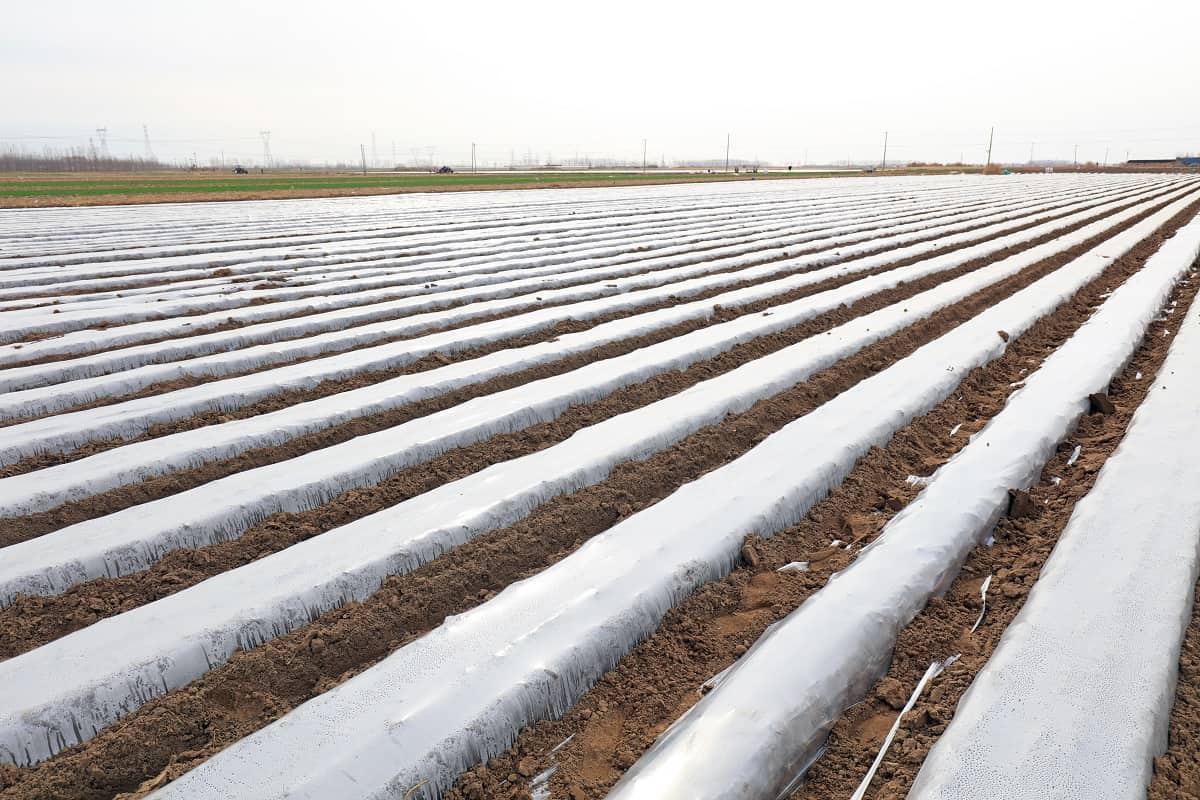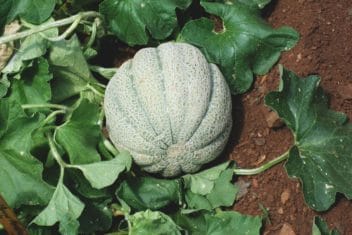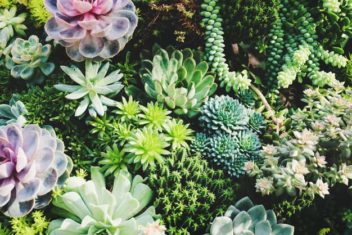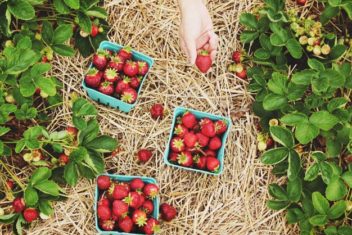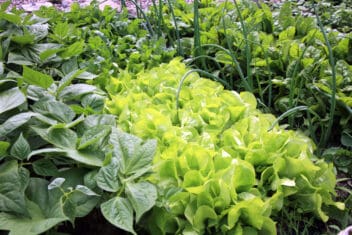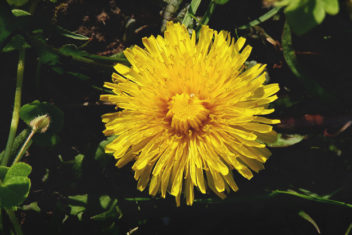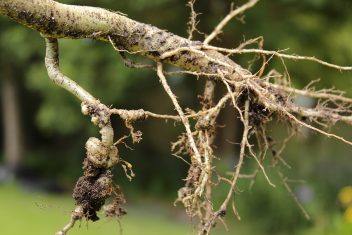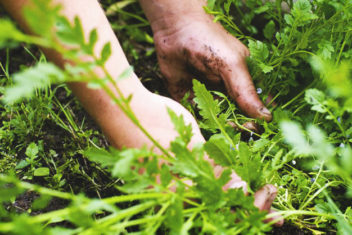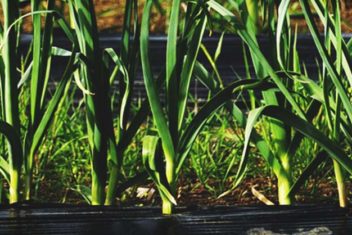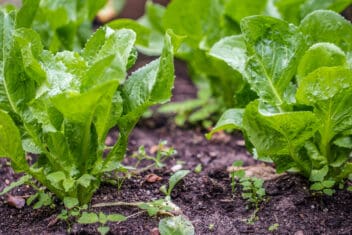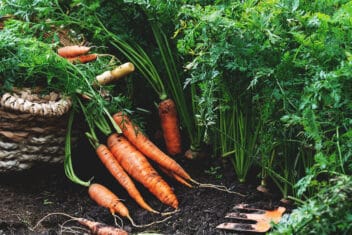Whether you’ve been gardening for 3 weeks, 3 years, or 3 decades, you’ve probably already heard of all the benefits that mulch can offer to your plants.
The classic choices for garden mulch are organic matter like straw, dried leaves, wood chips, and grass clippings.
However, did you know that there’s an inorganic mulch that can work wonders for your plants?
It might not be as good for the soil or the environment as organic mulch, but plastic mulch offers several benefits to gardeners, both novice and expert alike.
What is Plastic Mulch?
Plastic mulch is a type of inorganic mulch, categorized with other inorganic mulches like rock, stone, and crushed gravel.
It first became popular in the 1950s and uses polyethylene film to protect plants. It is just a sheet of black plastic that works the same way as regular organic mulch.
The film insulates the soil, prevents erosion, reduces weeds, and provides so many other benefits.
First used in berry and vegetable production, black plastic mulch can now be used for a wide assortment of plants.
Types of Plastic Mulch
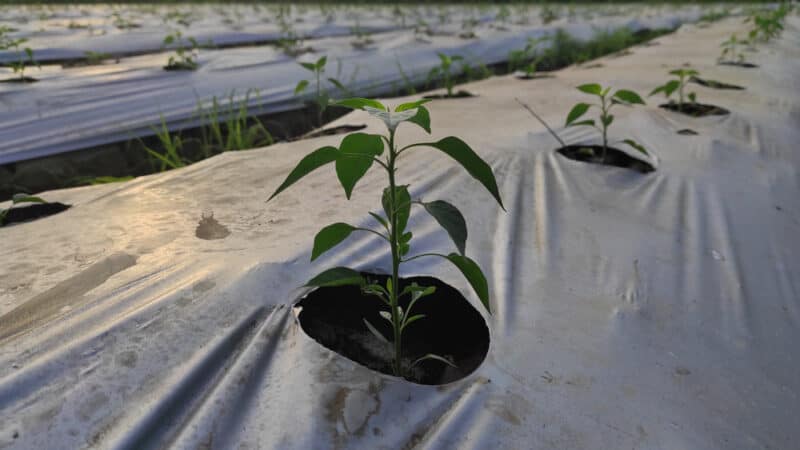
There are two “traditional” types of plastic mulching. The black plastic one is perfect for eliminating weeds, warming up the soil, and retaining soil moisture. Clear plastic mulch is perfect for warming up the soil, too, but also in encouraging faster growth early on in the growing season. It’s not as good at suppressing weed growth.
In recent years, other colors of plastic mulch have also come onto the scene.
White plastic isn’t of great interest to most gardeners, since we have cooler weather and shorter growing seasons. We tend to be more interested in warming the soil than in cooling it. However, for gardeners in tropical climates, white plastic mulch can help keep the soil cool around the roots of plants like peas, cabbage, and broccoli.
Brown plastic (also known as Brown Infrared Transmitting) mulch is relatively new. It’s better at warming the soil than black plastic and also controls weeds.
Red plastic is unique in that it has beneficial effects, but only for certain vegetables (including eggplants, basil, and tomatoes). Green mulch can encourage earlier ripening and higher yields of fruits like cantaloupe, while blue mulch is ideal for summer squash, cucumbers, and cantaloupes.
Finally, silver mulch is rare but is often used as a deterrent to aphids. It can also boost yields on plants like peppers, squash, and cucumbers.
Benefits of Using Plastic Mulch in the Garden
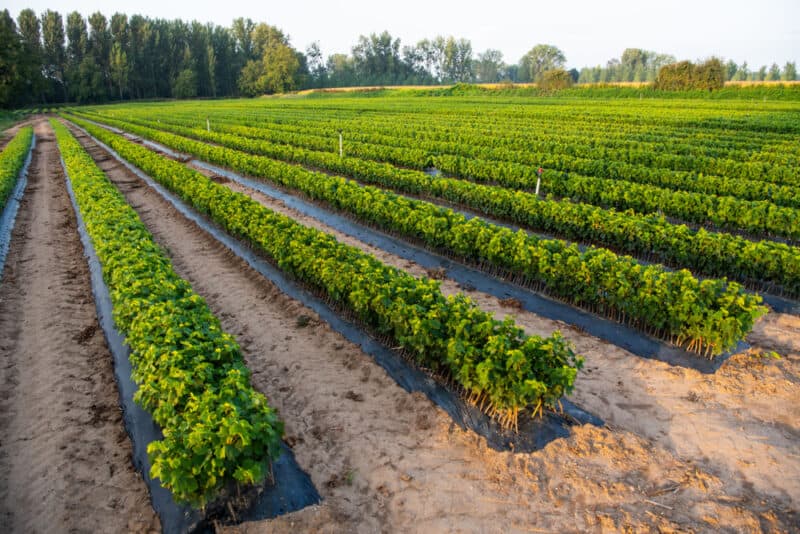
Ready to learn more about everything that plastic mulch can do for you? Here are some of the biggest benefits.
1. Moisture Retention
All kinds of mulch can help hold water, but plastic mulch is one of the best since it does so evenly and consistently. You can water less often to keep your plants fully hydrated.
One thing to note with plastic mulch is that it can be a bit restrictive in terms of holding moisture. You may have to pair it with a drip irrigation method to make sure it holds an appropriate amount of water.
2. Helps Soil Heat Up Faster
Plastic mulch insulates the soil. Vegetables, in particular, can be quite temperature-sensitive. Mulch can help the soil warm at a rate of 5°F (or more) faster. Because of this, you can grow crops earlier in the season (up to 3 weeks sooner!) than normal.
It also regulates the temperature evenly, so you won’t have dramatic swings between plants in different areas of the garden. Because it helps the soil retain heat as colder weather sets in, your plants may be able to survive a bit longer into the fall, too.
You can even use plastic mulch around shrubs and trees to protect them from winter damage!
3. Improves Soil Texture
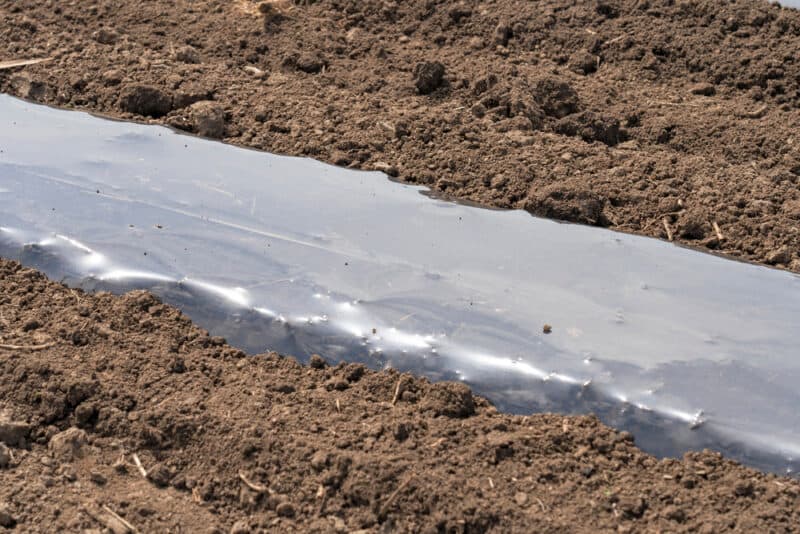
Plastic mulch can dramatically improve soil texture and structure. When you mulch, it makes it difficult for the soil to clump together and remain compact. It also traps heat and moisture, making it harder for plants to leach nutrients.
When you lay down plastic mulch, it also serves as a clear signal to people and animals not to walk on it. Therefore, this can reduce compaction even further.
4. Deters Some Pests
Some pests may be deterred by certain types of plastic mulch, particularly silver mulch. Although this effect isn’t uniform across all plants and all types of plastic mulch, it’s certainly worth trying!
5. Protects Plant Roots
Plastic mulch can protect plant roots. It eliminates the need to work between plants, instead, requiring you to just walk between individual rows. Since the soil remains undisturbed, plant roots can grow and spread with ease.
6. Suppresses Weeds
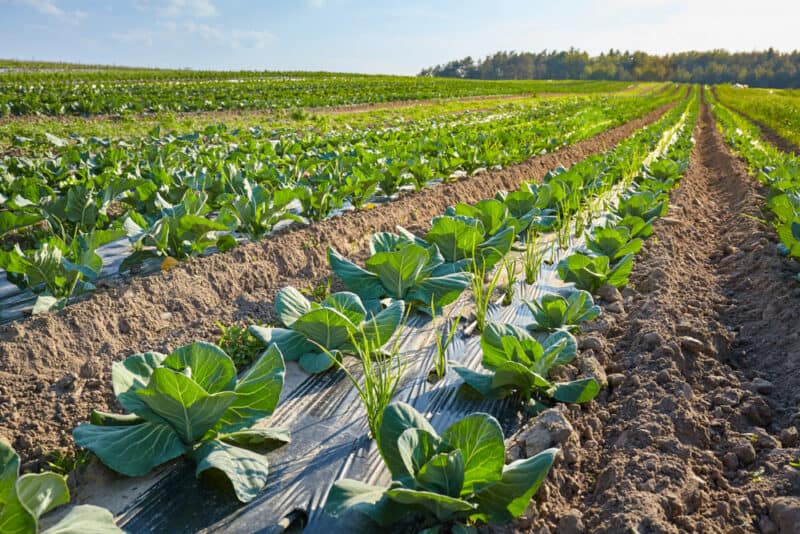
Personally, this is my favorite feature of plastic mulch – it’s a great way to control weeds.
If you don’t have time to weed the garden every single day (who does?) then using plastic mulch is the way to grow. It prevents weeds from obtaining the sun they need for photosynthesis so you won’t have to resort to pulling them by hand.
7. Provides a Barrier for Leafy Crops From Contacting the Soil
When you put down mulch, you create a barrier between your plants and the soil. This is essential for plants like leafy vegetables as well as those that produce fruits. It can help prevent rot and the spread of disease.
Plus, since they aren’t in direct contact with the soil, they won’t get dirty every time you water, either.
8. Offers a Tidier Appearance
Last but not least, I’ve found that using plastic mulch in the garden just makes it look better. It could be that there are fewer weeds around plants or that the effect of the plastic around the plants is cleaner.
Whatever the case may be, it will upgrade the aesthetic of your garden almost instantly!
How to Mulch With Plastic
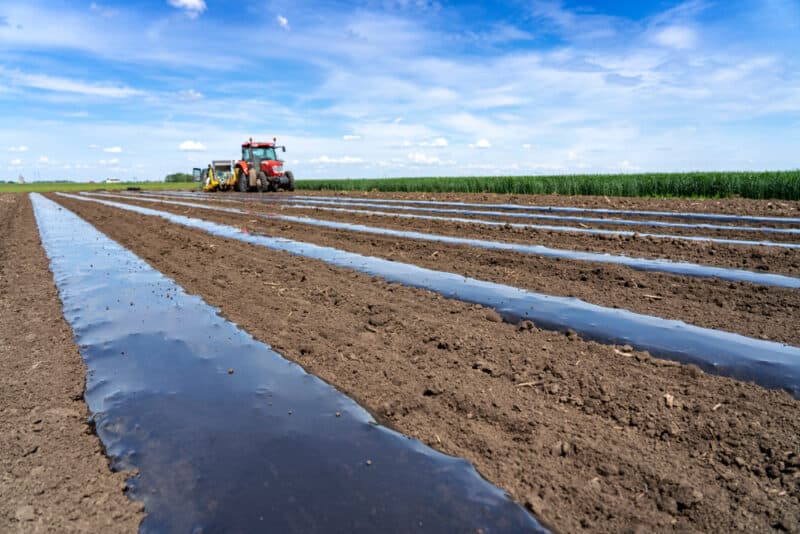
Mulching with plastic is simple.
All you need to do is buy a roll and lay it out in the garden. I recommend doing this a few weeks before you’d like to start planting. That way, it will give the soil time to warm up.
You can weigh the plastic down either with specialized stakes or with loose rocks.
Once the plastic is in place, you can cut small holes into it to plant your seeds or transplants.
When it comes time to water, simply install soaker hoses beneath the plastic or use sprinkler systems to irrigate your plants.
Disadvantages of Plastic Mulch: What to Keep in Mind
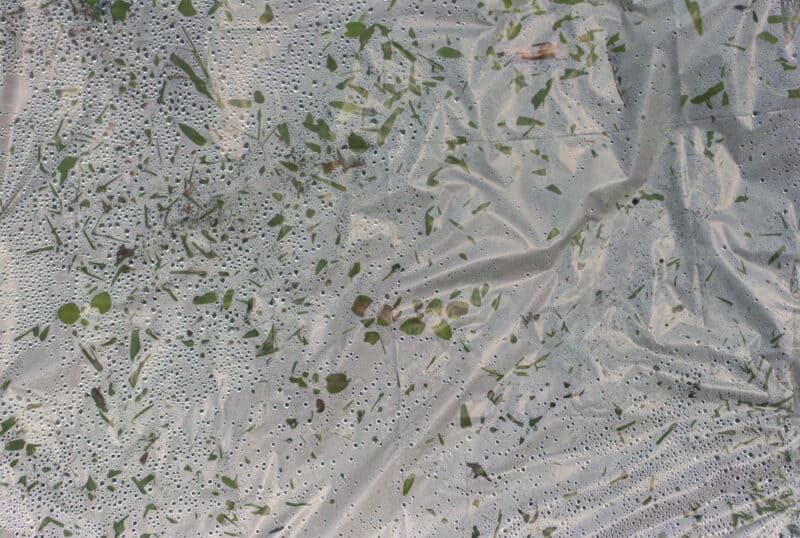
Plastic mulching has so many benefits – yet there are a few drawbacks to keep in mind.
For one, it’s not the most environmentally friendly. Unless you’re careful about not ripping it when you pull it up at the end of the growing season, it can’t be reused between seasons. Even if you are delicate with it, it will degrade and have to head to the landfill eventually.
It is difficult to recycle and since it is derived from a petroleum product, it’s not the best for the environment when it comes to its manufacturing and disposal.
One other disadvantage of plastic mulch is that it can lead to an excess of both heat and moisture. Some crops are sensitive to too much heat, so you may have to avoid this type of mulch for things like lettuce, broccoli, and peas. Since it traps water, you will have to use drip irrigation instead of overhead sprinklers, but this is a good piece of growing advice to follow, anyway.
As you can see, plastic mulch has all kinds of drawbacks, but the benefits easily outweighed most of these. Consider using some in your garden next spring!
